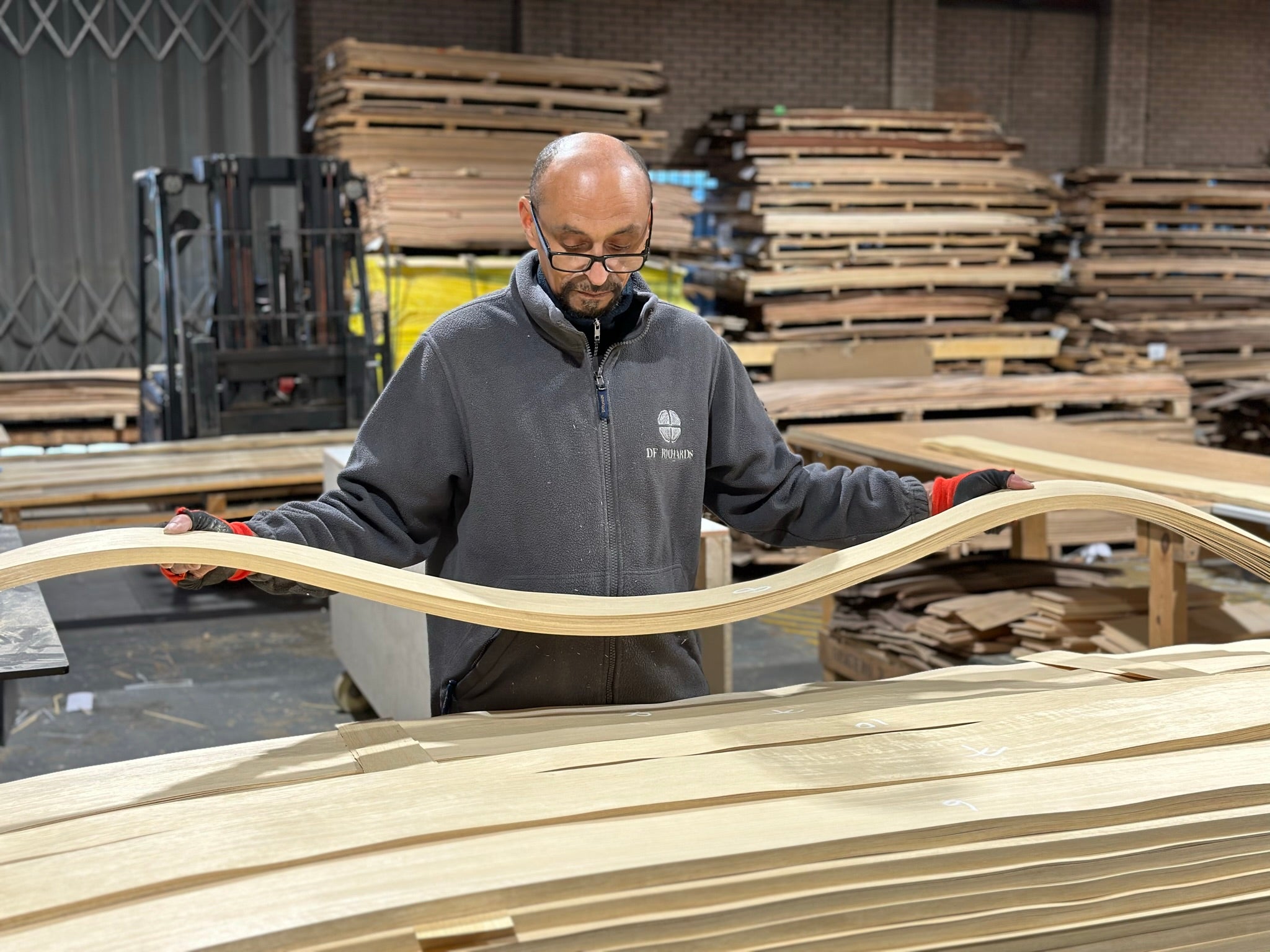Crown Cut
Crown cut wood veneer, also known as "flat cut" or "plain sliced" veneer, is a type of wood veneer characterized by a distinctive grain pattern that resembles a series of arches or "crowns." This pattern is created by slicing the log parallel to a line through the center of the log, which exposes the growth rings in an elliptical shape.
Quarter Cut
Quarter cut veneer, also known as "quarter sawn" veneer, is a type of wood veneer that is produced by slicing the log into quarters before cutting the veneer sheets. This method yields a distinctive and straight grain pattern.
Rift Cut
Rift cut veneer and quarter cut veneer are two methods of slicing wood veneer that result in different grain patterns. Rift cut veneer involves cutting the log at an angle, usually between 15 to 30 degrees from the radial axis, creating a straight and uniform grain pattern. This method minimises the appearance of medullary rays, making it ideal for modern designs. On the other hand, quarter cut veneer is produced by slicing the log perpendicular to the growth rings, emphasising the medullary rays and growth rings.
Rotary Cut
Rotary cut veneer is crafted by peeling a log on a lathe, resulting in broad, varied grain patterns, including bold cathedral patterns and swirls. This method yields long and wide sheets of veneer, making it popular for applications such as plywood, interior panelling, and furniture where a rustic aesthetic is desired.
Rough Sawn
Rough cut veneer differs from veneer cut with a non-serrated knife primarily in the texture and appearance of the finished product. Rough cut veneer typically involves using specialised techniques or equipment that intentionally create a more textured, rustic surface, retaining more of the natural irregularities and grain patterns of the wood. In contrast, veneer cut with a non-serrated knife tends to have a smoother, more uniform surface as the continuous, clean cutting action of the knife produces a finer finish with fewer surface imperfections. This distinction makes rough cut veneer particularly appealing for designs that emphasise a natural, unfinished aesthetic.


